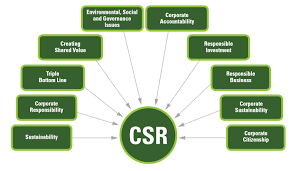Employee Performance Within Oil and Gas Companies FACTORS AFFECTING EMPLOYEE PERFORMANCE WITHIN OIL AND GAS COMPANIES IN DEVELOPING STATES SUCH AS QATAR Order Instructions:

Dear Admin,
Please find the proposal file and send it to the writer.
Regards,
Amir
Employee Performance Within Oil and Gas Companies Sample Answer
FACTORS AFFECTING EMPLOYEE PERFORMANCE WITHIN OIL AND GAS COMPANIES IN DEVELOPING STATES SUCH AS QATAR
Introduction
Employees are undoubtedly the most important asset any organization can have, and their level of expertise and motivation greatly affects the performance of the organization. Their input in the organizational performance through creativity and innovation can help a company have a competitive edge in the marketplace (Kehoe & Wright 2013). Many companies spend a lot of resources in seeking, developing and training the best talents. Training helps employees have a firm understanding of their duties and responsibilities, and undertaking them in accordance with the organization’s vision (Elnaga & Imran 2013). However, it is important for employees to understand that training encompasses an important aspect of their career development, and helps them beyond their job areas.
Qatar is one of the countries in the world which wholly depends on oil for their subsistence productions and general national revenues. There exists much company which produces several goods directly from oils, while some provide consultancy and similar services to these companies and industries. It is therefore important to understand how these companies manage to utilize high-performance human resource strategies, amidst falling oil prices that affect revenues and subsequently, programs that support employee development such as training and rewards.
Training and development face significant challenges from several facets of organizational management. Lack of an effective training program can negatively affect employee motivation and performance (Elnaga & Imran 2013). The aim of this study is to investigate the human resource programs regarding employee training and development employed by companies in Qatar, and the changes they face, with the intention of providing the best training and development procedure that ensures maximum employee engagement in organizational development.
Background of the Study
- The Necessity for Employee Training
Many employees enter the workforce having undergone a rigorous academic process that prepared them for their future careers. However, different organizations exist in very competitive and ever-changing spheres of operation, which requires a dynamic approach that is different from the academic angle that most employees come with into the marketplace. It necessitates organizations to invest in the training and development of their employees in order to tailor them for the company’s expectation (Kehoe & Wright 2013). Each company encounters different challenges in the market and uses a specific management strategy that requires employees to have the requisite skills in order to make an appropriate work-related decision.
According to Breugst et al. (2012), the main aim for employee training and development is to bridge a skill gap that is present in the company. Additionally, the market constantly experiences competitiveness that forces competitors to change business strategies frequently. Constant training and employee development work as a tool for refreshing employees’ knowledge of the working of the market and the ever-changing customer expectations in order to remain competitive. For example, the popularity of smartphones among people necessitates companies to engage their customers more through social media, which requires employees of companies to be knowledgeable on how to accomplish such tasks. Customer loyalty to an organization’s brand has a direct relation to the quality of services offered in an organization (Dhar 2015). Therefore; employee training is a necessity to ensure they understand customer expectation.
Another reason for training employees is to improve productivity and job performance. Productive employees result in the company easily achieving its goals and easily meeting its targets. A company that retains highly skilled employees gains a considerable competitive advantage because of the high output and creative production regimes (Lee et al. 2013). Employees will generally leave a company because of a lack of guidance, poor feedback, lack of career development initiatives from their manager, and learning nothing new in the job. According to Westermann et al. (2012), employees reach a position of burnout and boredom for repeating the same procedures daily and require positive interventions to boost their morale and make their work more fun. Therefore training and development help in refreshing them and making their assignments more engaging.
- Employee Development in Qatari Companies
Crude oil is a high-value product traded in U.S. dollars and whose performance affects many markets (Mileva & Siegfried 2012). Many companies in Qatar use it for production of medicine, chemicals, plastics, petroleum products and running the country’s irrigation schemes, making it a very important aspect of the national economy. Rising prices of crude oil affect stock market prices, the value of goods, heating, and transportation costs that generally affect service provision (Chaibi & Gomes 2013). However, this is beneficial for an oil-producing country like Qatar as it causes an increase in revenue that subsequently improves the profitability of local companies. Subsequently, falling of oil prices affects the earnings of oil producing nation as they have to produce more in order to achieve higher earnings, which affects the productivity of their local companies that rely on oil. This causes other emerging economies to thrive while the local economy struggle due to their weakening currency and volatile stock markets (Basher, Haug & Sadorsky 2011).
There are very few studies carried on the effect of the falling oil prices in the international markets on local Qatari companies since 2014. In fact, many studies concentrated on the effect on local currency, market volatility, stock prices, and exchange rates. Naifar and Al Dohaiman (2013) suggest that falling oil prices has a direct relation to inflation, especially of oil producing country due to reduced returns and weakening local currency. The spillover effect is that these companies will have to produce more in order to keep revenue values high due to the falling commodity prices on the international markets. Oil shocks and falling oil prices have hit hard most oil-dependent economies like Qatar, forcing governments and companies to adopt austerity measures (Hamdi & Sbia, 2013). The government has reduced spending, overstaffing and wastefulness, while Qatar Petroleum in 2016 sacked almost 1,000 workers to cut on costs (World Bank.org, 2017).
Reducing workforce is one of the ways most companies use in a bid to cut costs and reduce expenditure. However, the remaining employees have to work twice as much in order to cover up for their departing colleagues. This could have psychological effects as well as fatigue or burnout from increased responsibility. This may cause low employee turnover and absenteeism (Westermann et al. 2012). Cutting spending may also affect employee development initiatives such as reward systems, training programs, and bonuses that aid greatly in promoting employee motivation (Campbell et al 2012). Therefore, the companies in Qatar need to have cost-friendly employee training programs that do not strain their budgets amidst calls by the government to step up austerity measures.
Many companies and government institutions risk losing their highly skilled expats due to lower salaries and lack of development initiatives (Cafiero 2016). Lack of coherency in the needs of the employees and increased job instability has a negative effect on employees’ turnover. Therefore, in the midst of implementing austerity measures, companies can still employ cost-friendly initiatives in keeping the remaining workers while employing effective educational programs in order to enable remaining employees to handle multiple tasks effectively. Job training is important and faces several problems which may render it ineffective. This study aims to provide a proper method that ensures employees receive training tailored for their jobs and their job description.
Statement of the problem and Employee Performance Within Oil and Gas Companies
The role of education and development in business settings is changing towards a more education type. It has become common for firms to tailor human resource to fit the goals of the organization by imparting skills and knowledge unique to the firm. This research seeks to identify problems in employee training and development and suggest strategic measures ensure a cost-friendly and meaningful training.
Purpose of the Study
The study employs a qualitative study design aimed at gathering information from employees from Qatari companies, using open-ended questionnaires and semi-structured interviews. This will help in understanding undocumented problems associated with training and development and how to bridge these gaps using the best evidence-based methods that lead to lower costs and increased efficiency. The study will utilize 200 randomly selected subjects to provide this information from their company practices.
The significance of the Employee Performance Within Oil and Gas Companies Study
The study aims at describing problems related to employee training and development with the purpose of providing an alternative to these problems. The study takes place in Qatar because of its significance as an area with one of the best human resource management practices in the word. The solutions will help human resource managers adopt cost friendly and more effective employee training and development procedures in order to meet company goals.
Employee Performance Within Oil and Gas Companies Research objectives
- To explain the role of training and development on the performance of organizations in Qatar.
- To identify the strategic measures organizations can pursue in training and development.
- Research questions
- How do training and development impact an organization’s overall performance?
- What are the challenges encountered by both the firm and employees in training and development?
Justification of study
The impact of training and development has received overwhelming research and pragmatic strategies to help businesses empower their workforce with the latest skills. However, learning is a regular and continuous activity that needs new techniques and plans. To remain competitive in a changing world, managers and leaders must remain relevant regarding skills and knowledge. This study seeks to add to the current literature novel concepts and approaches in training and development.
Scope and Limitation
The research will be limited to the number of participants used for the study due to the complexity of conducting semi-structured interviews. The researcher will only use 200 respondents to represent organizations in Qatar. The study will, therefore, be prone to a small amount of sampling error.
Theoretical framework
Over time, organizations have changed the way they used to conduct training and development. It used to be job-focused and limited to technical skills (Bartlett, 2001). As the nature of training has changed, new literature and approaches have come in place to explain the role of training and development in enhancing performance. One of these theories is the Action Theory put forward by Frese & Beer (2007). The theory attempts to explain how learning is controlled and gives insight on how people can change behavior to meet the requirements of the firm. Unlike the cognitive and information processing theories, Action Theory links behavior and specific working outcomes (Milhem, Abushamsieh & Aróstegui, 2014). It is concerned with the process involved in the interaction that exists between the environmental inputs and behavior and how cognition regulates this behavior.
The theory is a systematic tool for explaining how knowledge of the cognitive process in performance is regulated by using focus and structure components. The managers should have confidence in the value of collaboration and communication among the departments, and also commit to and implement a regular employee performance. Finally, it’s important for the organization to believe in the power of personal connections and relationships among the staff.
Employee Performance Within Oil and Gas Companies Summary
Employee training and development is an important company initiative as it aims at increasing employee productivity and job specificity. Understanding the best cost friendly and effective initiatives in employee training is imperative in sustaining best human resource initiatives. Therefore, this study seeks information from employees in the best companies in Qatar known for quality human resource practices, in order to understand problems associated with employee development and providing solutions to managers. The study is qualitative in design and is polycentric in nature. The literature review provides further information on the subject and the theoretical framework behind the study. This expounds on the need for effective training programs that lead to higher employee productivity.
Employee Performance Within Oil and Gas Companies References
Bartlett, K.R., 2001. The relationship between training and organizational commitment: A study in the health care field. Human resource development quarterly, 12(4), pp.335-352.
Basher, S.A., Haug, A.A. and Sadorsky, P., 2012. Oil prices, exchange rates, and emerging stock markets. Energy Economics, 34(1), pp.227-240.
Breugst, N., Domurath, A., Patzelt, H. and Klaukien, A., 2012. Perceptions of entrepreneurial passion and employees’ commitment to entrepreneurial ventures. Entrepreneurship Theory and Practice, 36(1), pp.171-192.
Cafiero, G., 2016. Qatar Cuts Spending to Cope with Low Oil Prices. (Updated 1 March 2016). Retrieved from: http://www.mei.edu/content/article/qatar-cuts-spending-cope-low-oil-prices. (Accessed 24 March 2017).
Campbell, B.A., Ganco, M., Franco, A.M. and Agarwal, R., 2012. Who leaves, where to, and why worry? Employee mobility, entrepreneurship, and effects on source firm performance. Strategic Management Journal, 33(1), pp.65-87.
Chaibi, A. and Gomes, M., 2013. Volatility Spillovers Between Oil Prices and Stock Returns A Focus on Frontier Markets (No. 2013-034).
Dhar, R.L., 2015. Service quality and the training of employees: The mediating role of organizational commitment. Tourism Management, 46, pp.419-430.
Elnaga, A. and Imran, A., 2013. The effect of training on employee performance. European Journal of Business and Management, 5(4), pp.137-147.
Frese, M. Raabe, B., and Beehr, T.A., 2007. Action regulation theory and career self-management. Journal of Vocational Behavior, 70(2), pp.297-311
Hamdi, H. and Sbia, R., 2013. Dynamic relationships between oil revenues, government spending and economic growth in an oil-dependent economy.Economic Modelling, 35, pp.118-125.
Kehoe, R.R., and Wright, P.M., 2013. The impact of high-performance human resource practices on employees’ attitudes and behaviors. Journal of management, 39(2), pp.366-391.
Lee, C.K., Song, H.J., Lee, H.M., Lee, S. and Bernhard, B.J., 2013. The impact of CSR on casino employees’ organizational trust, job satisfaction, and customer orientation: An empirical examination of responsible gambling strategies. International Journal of Hospitality Management, 33, pp.406-415.
Mileva, E. and Siegfried, N., 2012. Oil market structure, network effects and the choice of currency for oil invoicing. Energy Policy, 44, pp.385-394.
Milhem, W., Abushamsieh, K. and Pérez Aróstegui, M., 2014. Training strategies, theories, and types. Journal of Accounting, Business & Management, 21(1), pp.12-26.
Naifar, N. and Al Dohaiman, M.S., 2013. Nonlinear analysis among crude oil prices, stock markets’ return, and macroeconomic variables. International Review of Economics & Finance, 27, pp.416-431.
Westermann, C., Kozak, A., Harling, M. and Nienhaus, A., 2014. Burnout intervention studies for inpatient elderly care nursing staff: Systematic literature review. International journal of nursing studies, 51(1), pp.63-71.
Word Bank.org, 2017. How is Qatar Reacting to Low Oil Prices? Retrieved from: http://www.worldbank.org/en/country/gcc/publication/economic-brief-july-qatar-2016. (Accessed 24 March 2017).












